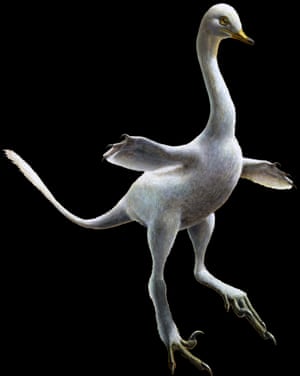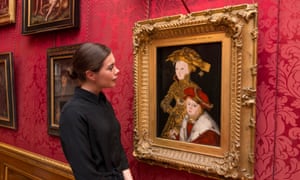via An Awfully Big Blog Adventure by Dawn Finch

One of the Reading Rooms at Gladstone's Library
One of the joys of my work is that I get to visit libraries all over the country. I have spoken at, and written in, some of the most amazing libraries and I always take the opportunity to have a good mooch around their shelves. In November 2017 I was invited to speak at Gladstone’s Library in Flintshire in North Wales. This library houses the collection of Victorian statesman and Prime Minister, William Gladstone. The collection is housed in a stunning listed building, and still works as a library, providing access to researchers and writers, and you can even get a bed for the night, which is exactly what I did.
Continue reading
==============================
via Boing Boing by Carla Sinclair
==============================
via Interesting Literature
In this week’s Dispatches from The Secret Library, Dr Oliver Tearle reads Christopher Fowler’s enthralling account of the writers who time forgot
I’ve always been fond of the curious coincidence that in the 1960s there was a writer of novels about boxing who wrote under the name Frank Bruno. Or that Robert Shaw, who turned in a booming performance as Henry VIII in Fred Zinnemann’s superlative film of Robert Bolt’s play A Man for All Seasons, was a successful novelist as well as a fine actor. The literary associations of such names have now largely been lost, but it’s great fun to recover them and re-examine the work of the authors in question.
So I was thrilled to receive a copy of Christopher Fowler’s new book, The Book of Forgotten Authors, which bears a glorious pink cover dotted with silhouettes of now-unfamiliar literary figures, and salvages 99 names from the mists of writerly obscurity and puts them back under the spotlight. And some of the revelations on offer here are truly fascinating.
Continue reading
==============================
via the Guardian by Nicola Davis

Reconstruction of Halszkaraptor escuilliei. This small dinosaur was a close relative of velociraptor, but in body shape and inferred lifestyle it resembles modern birds such as swans. Photograph: Lukas Panzarin/Andrea Cau
An unusual set of fossilised remains illegally poached from Mongolia belonged to a new species of dinosaur with the rare trait of living on both land and water, researchers have claimed.
Thought to have lived around 71–75m years ago, the creature boasts a swan-like neck, razor-sharp “killer claws” on its feet, a duck-billed snout and forelimbs with proportions that might have helped it swim.
Continue reading
==============================
via the OUP blog by Vivian Yan

“Image from page 648 of “Annual report of the Bureau of American Ethnology to the Secretary of the Smithsonian Institution” (1895)” by Photo Internet Archive Book Images.
Public Domain via Flickr
The panpipes or “pan flute” derives its name from the Greek god Pan, who is often depicted holding the instrument. Panpipes, however, can be found in many parts of the world, including South America, Oceania, Central Europe, and Asia.
Continue reading
==============================
via Arts & Letters Daily: Daniela Blei in The Atlantic

DANIEL SAMBRAUS / GETTY
Like every graduate student, I once holed up in the library cramming for my doctoral oral exams. This ritual hazing starts with a long reading list. Come exam day, the scholar must prove mastery of a field, whether it’s Islamic art or German history. The student sits before a panel of professors, answering questions drawn from the book list.
To prepare for this initiation, I bought a lifetime supply of index cards. On each four-by-six rectangle, I distilled the major points of a book. My index cards—portable, visual, tactile, easily rearranged and reshuffled—got me through the exam.
Continue reading
==============================
via the Big Think blog by Robby Berman

(WATA1219)
In each culture, we’re trained to hear in a certain way. Speakers of tonal languages such as Chinese recognize subtleties of pitch that are difficult for English-speaking people to grasp. A similar thing happens with Indian music, which uses pitches between notes with which Western listeners are familiar. Similar biases make it difficult for human researchers to discern the subtleties of animal sounds that may sound alike to us, but maybe not to them. AI, though, is very good at identifying patterns, and researchers have set it the task of analyzing sounds from the ocean floor. It’s just found six distinct dolphin clicks we never new existed, according to a study just published in PLOS Computation Biology.
Continue reading
==============================
via Boing Boing by Mark Frauenfelder
After seeing people make musical tones by rubbing their wet fingers around the rim of a wine glass, Benjamin Franklin invented the glass armonica in 1761. Today, there are very few glass armonica players. Chris Funk of the Decemberists went to visit one of them.
Dean Shostak is one of last true masters capable of playing the glass armonica – an enchanting instrument lost to time. First devised in 1761 by Benjamin Franklin, the art of “playing glass” began to fade in popularity as musical fashions changed. Today, there are only eight glass armonica players left in the world. Along with the revival of the armonica, Shostak is also reintroducing an entire family of glass instruments, including the glass violin, the crystal hand bells and the French Cristal baschet.
==============================
via Interesting Literature
‘Love’ and ‘poetry’ go together to form a natural pair, but as Shakespeare pointed out, the course of true love never did run smooth. Sometimes the greatest lovers are those who pine away, hopelessly devoted to someone who will never return their affections. From the medieval courtly love tradition onwards, poets have been treating the subject of unrequited love.
Continue reading
==============================
via the Guardian by Mark Brown Arts correspondent

Portrait of a Lady and Her Son by Lucas Cranach the Elder and his workshop, in the King’s Dressing Room, Windsor Castle. Photograph: Todd-White Art Photography/Ben F/Royal Collection Trust
For more than a century art historical experts have labelled a painting Queen Victoria bought as a Christmas present for Prince Albert a 19th-century fake.
But a new generation of art historians has discovered they were wrong. Victoria and her advisers were correct when they bought the painting in 1840. It is a genuine work by the German master Lucas Cranach the Elder and his workshop.
On Tuesday [14 November 20127], the gloriously restored work went on public display at Windsor Castle, taking pride of place in the King’s Dressing Room alongside other works by Cranach.
Nicola Christie, the head of paintings conservation at the Royal Collection Trust, welcomed the discovery. “It is an absolute thrill. It doesn’t happen very often and it is such a pleasure to know that it has been reattributed.”
Continue reading
No comments:
Post a Comment